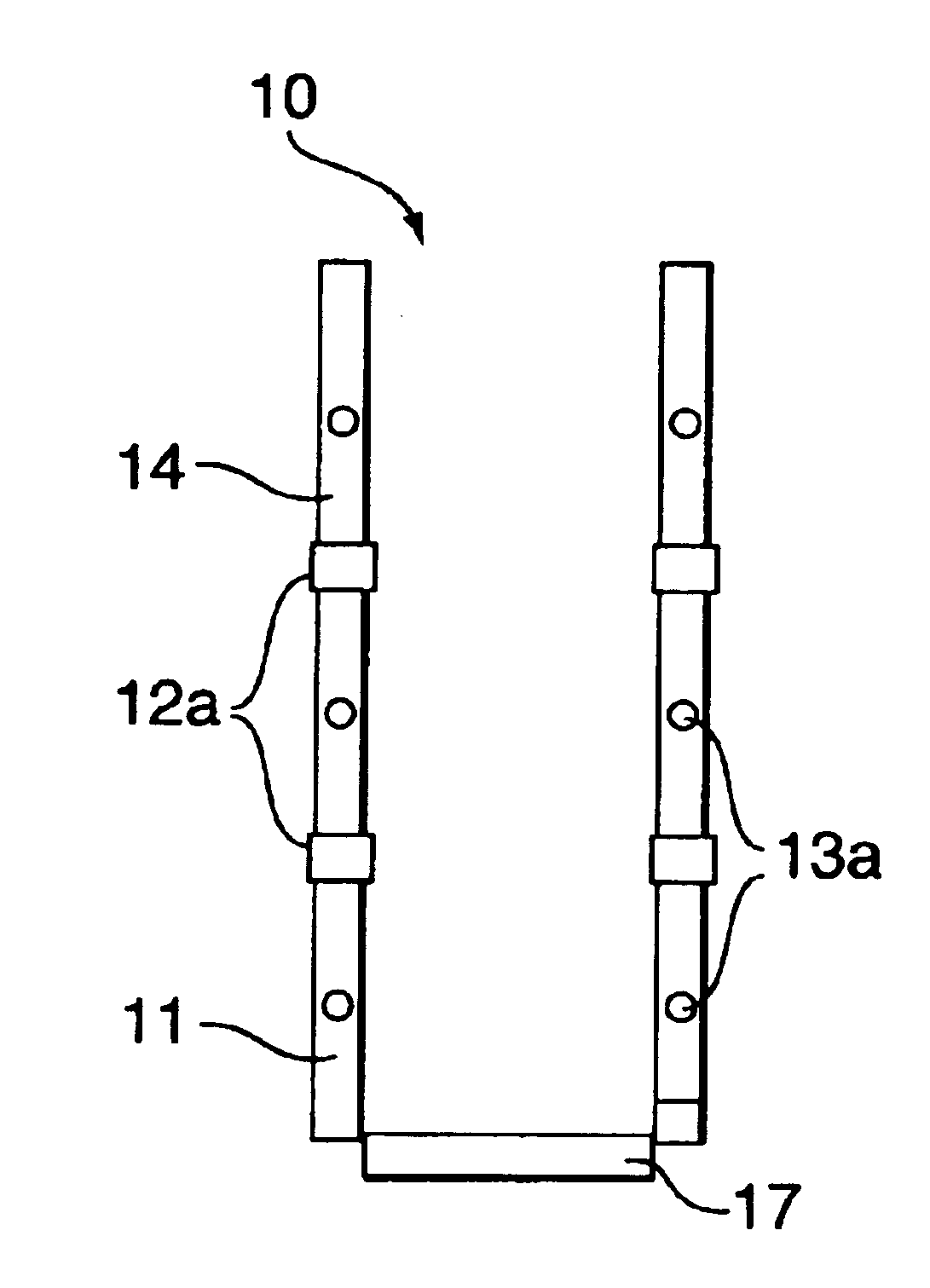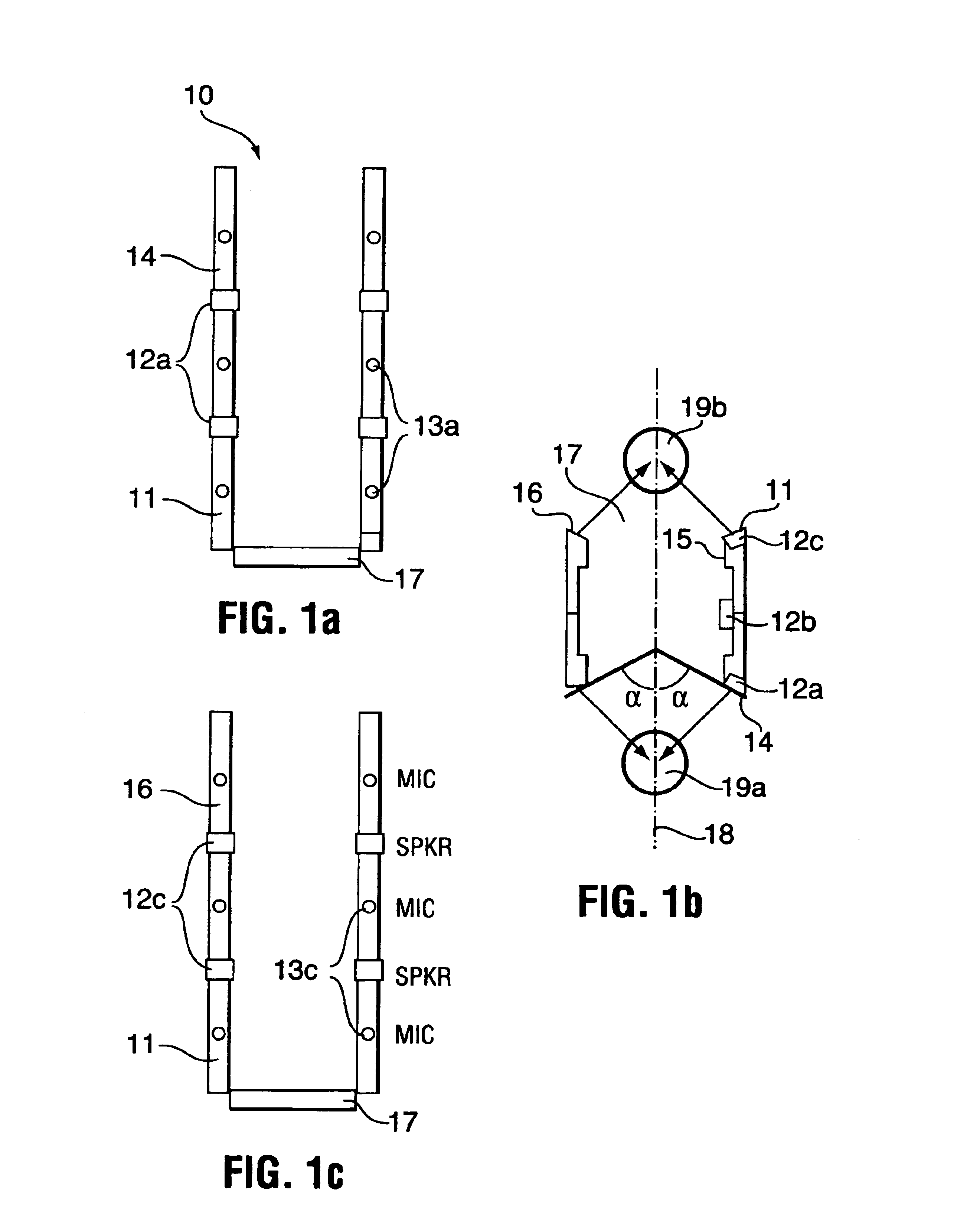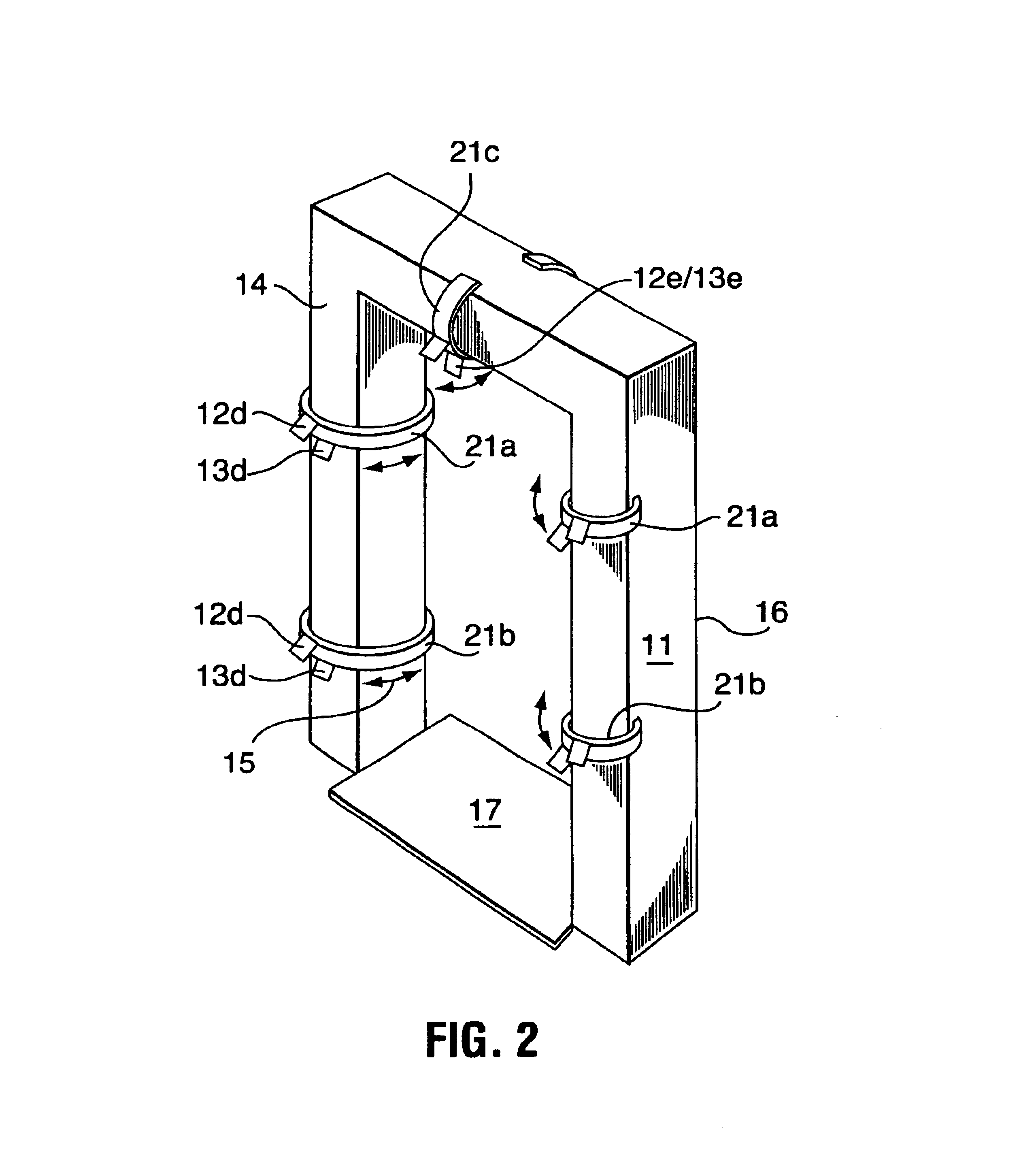Acoustic portal detection system
a detection system and portal technology, applied in the field of human subject scanning, can solve the problems of inconvenient x-ray analysis of passenger screening, unacceptable to expose airline passengers to x-rays on a routine basis for security purposes, etc., and achieve the effect of improving airport and other building security, rapid scanning, and efficient operation
- Summary
- Abstract
- Description
- Claims
- Application Information
AI Technical Summary
Benefits of technology
Problems solved by technology
Method used
Image
Examples
second embodiment
the invention is shown in FIG. 2 (perspective view).
The second embodiment is very similar to the first embodiment (described with reference to FIG. 1) with the principle exception that the acoustic transmitters and detectors can move relative to the frame. For this purpose, the transmitters 12 and detectors 13 may be mounted to rotatable mountings 21, which themselves are pivotally mounted to the various parts of the frame 11. The embodiment illustrated in FIG. 2 provides for transmitters 12d and detectors 13d mounted to rotatable mountings 21a and 21b, which are themselves mounted to the vertical sections of the frame 11. In addition, the transmitters 12e and detectors 13e are mounted to rotatable mounting 21c, which itself is mounted to the upper horizontal section of the frame 11.
By rotatably mounting the transmitters and receivers upon the frame, the transmitters and receivers can be induced to move and effectively ‘follow’ the human subject during passage towards, through, and ...
example 1
Calculation of Reflection Coefficients (Impedance) is Sufficient for Detection of the Presence of Explosive Sheets
A prototype model of the portal detection system was utilized to test the capacity of the system to differentiate between a human wearing a shirt, and a human wearing a shirt, and concealing two types of simulated explosive materials beneath the shirt. For this purpose, acoustic energy was directed towards the human subject at a distance of 70 cm. The acoustic signals detected by the acoustic detector(s) were utilized to calculate an impedance value for the layer prior to the reflecting surface, and the reflecting layer. These values permitted calculation of the corresponding reflection coefficients in accordance with equation 4:
R=(Z1−Z2) / (Z1+Z2) (4)
whereR=reflection coefficient (db)Z1=impedance of the layer prior to the reflecting layerZ2=impedance of the reflection layer.
The comparative results of the experiment are shown in FIG. 4 where the reflection coefficient is...
example 2
Calculation of Absorption is Sufficient for Detection of the Presence of Explosive Sheets
The prototype model of the portal detection system was further utilized to conduct a similar experiment to that shown in Example 1, with an alternative method of acoustic analysis. For this purpose, acoustic energy of more than one frequency was directed towards the human subject at a distance of 70 cm. The resulting acoustic signals detected by the acoustic detector(s) were utilized to calculate a value for a rate of change of absorption with respect to frequency, either of the human subject or the human subject with two types of simulated explosives beneath clothing, in accordance with equation 2.
dS / df=function(dA / df, dα / df) (2)
WhereS=The detected acoustic energy amplitudeA=The transmitted source energy amplitude.α=The absorption of the human subject and concealed object (if present)f=Acoustic energy frequency.
The comparative results of the experiment are shown in FIG. 5. The results indicat...
PUM
 Login to View More
Login to View More Abstract
Description
Claims
Application Information
 Login to View More
Login to View More - R&D
- Intellectual Property
- Life Sciences
- Materials
- Tech Scout
- Unparalleled Data Quality
- Higher Quality Content
- 60% Fewer Hallucinations
Browse by: Latest US Patents, China's latest patents, Technical Efficacy Thesaurus, Application Domain, Technology Topic, Popular Technical Reports.
© 2025 PatSnap. All rights reserved.Legal|Privacy policy|Modern Slavery Act Transparency Statement|Sitemap|About US| Contact US: help@patsnap.com



